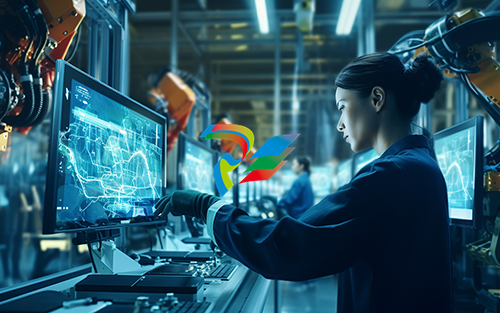
Total Automation: The Next Frontier Is Sensor to Cloud
The dictionary defines automation as “the technique of making an apparatus, a process or a system operate automatically.” ISA, the International Society of Automation, defines automation as “the creation and application of technology to monitor and control the production and delivery of products and services.”
Using ISA’s definition, the automation profession includes “everyone involved in the creation and application of technology to monitor and control the production and delivery of products and services.” An automation professional is “any individual involved in the creation and application of technology to monitor and control the production and delivery of products and services.”
During an ISA meeting where automation concepts were being discussed, Dennis Brandl, chief consultant at BR&L Consulting recommended that the term “total automation” be used to differentiate it from Hyperautomation. Brandl formally presented total automation at COPERMAN 2023. The Conference on Performance and Management (COPERMAN) aims to bring together researchers and practitioners to present and discuss innovative contributions concerning the measurement and management of organizational performance in a modern business environment.
Total automation is an important aspect of digital transformation because it serves to use information technology/operational technology (IT/OT) to improve performance for dangerous, dirty, demanding, delicate, and dull tasks (the five Ds of manufacturing).
The importance of total automation
According to Brandl, total automation is “a disciplined and all-inclusive approach to the entire process automation strategy of a manufacturing enterprise.” He said total automation is the next step beyond Hyperautomation, which he explained as an IT initiative to increase the automation of business processes (production chains, workflows, marketing processes, etc.) by introducing artificial intelligence (AI), machine learning (ML), and robotic process automation (RPA). “Total automation applies the concepts of automation to all elements of a company including OT and IT. The goal is to reduce the human errors that crop up in manual processes, and to use computing resources to verify and validate business operations,” he said.
Brandl said that total automation allows for performance management of all activities in a manufacturing enterprise. It is the combination of IT Hyperautomation, process automation, sensor automation, and OT task automation. Another way to look at it is by using new technologies in a real-time environment.

“The objective of total automation is to completely automate the processes in an operational facility to increase efficiency and productivity and reduce errors,” said Steve Mustard, president and CEO at National Automation Inc. and former (2021) ISA president. “Even with advances in technology over the past few decades, many organizations continue to operate manual or semi-manual processes. Examples include the manual collection of sensor readings, manual data entry, and manual analysis of data.
“The concept is important now as organizations seek to squeeze out every last drop of efficiency from their operations so they can be competitive in the global marketplace, responsive to changing customer demands, and be resilient to inevitable supply chain disruptions.”
Mustard described the automation/manufacturing timeline. The first industrial revolution of the 1800s transitioned processes in labor-intensive industries such as mining and textiles. The second industrial revolution in the 1900s introduced the internal combustion engine and electrification, enabling mass production. The third industrial revolution saw the rise of computers and telecommunications enabling greater automation and digitalization. “The fourth industrial revolution, or Industry 4.0,” explained Mustard, “builds on these advances and seeks to reshape how industries operate through the use of disruptive technologies such as AI, big data, and IIoT [Industrial Internet of Things]. Total automation leverages the disruptive technologies of Industry 4.0 to transform how organizations operate.”
Mustard shared some examples of the use of these technologies to move toward total automation:
Using ML to automatically analyze images to detect corrosion or other defects to reduce the time and effort involved in manual analysis and improve accuracy and reliability by the removal of human bias.
Using IIoT to automatically collect sensor data to remove the need for manual data collection.
Using AI to analyze sensor data to look for patterns that are not obvious to humans to reduce unplanned downtime.
The need for a total automation standard
The industry already has ISA95. But how would a total automation standard fit the various levels of the ISA95 model?
According to Mustard, total automation applies to all ISA95 levels:
Level 1: Use of IIoT to collect remote sensor data; use of AI or ML to maintain calibration and report on sensor discrepancies.
Level 2: Use of AI in expert systems supporting operator decision making.
Level 3: Use of AI to optimize production schedules and analyze machinery health.
Level 4: Use of big data analytics, AI, and cloud to automate business decision making.



.jpg)
















































.jpg)
.jpg)





.jpg)



.png)
.jpg)

.jpg)
_lVjBYb.jpg)

.jpg)
.jpg)



.jpg)
.jpg)







.jpg)

.jpg)
.jpg)











.jpg)




.jpg)
.jpg)
.jpg)
.jpg)
.jpg)
.jpg)

.jpg)

.jpg)
.jpg)
.jpg)








